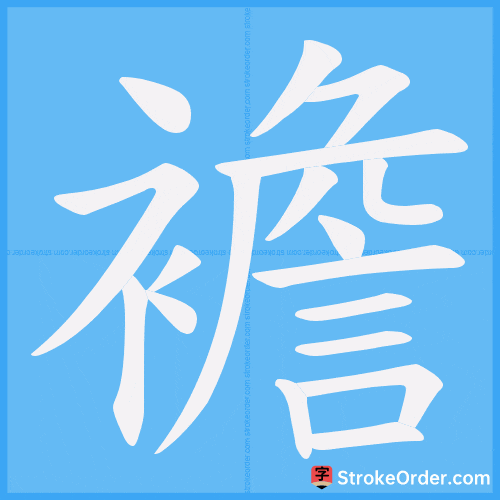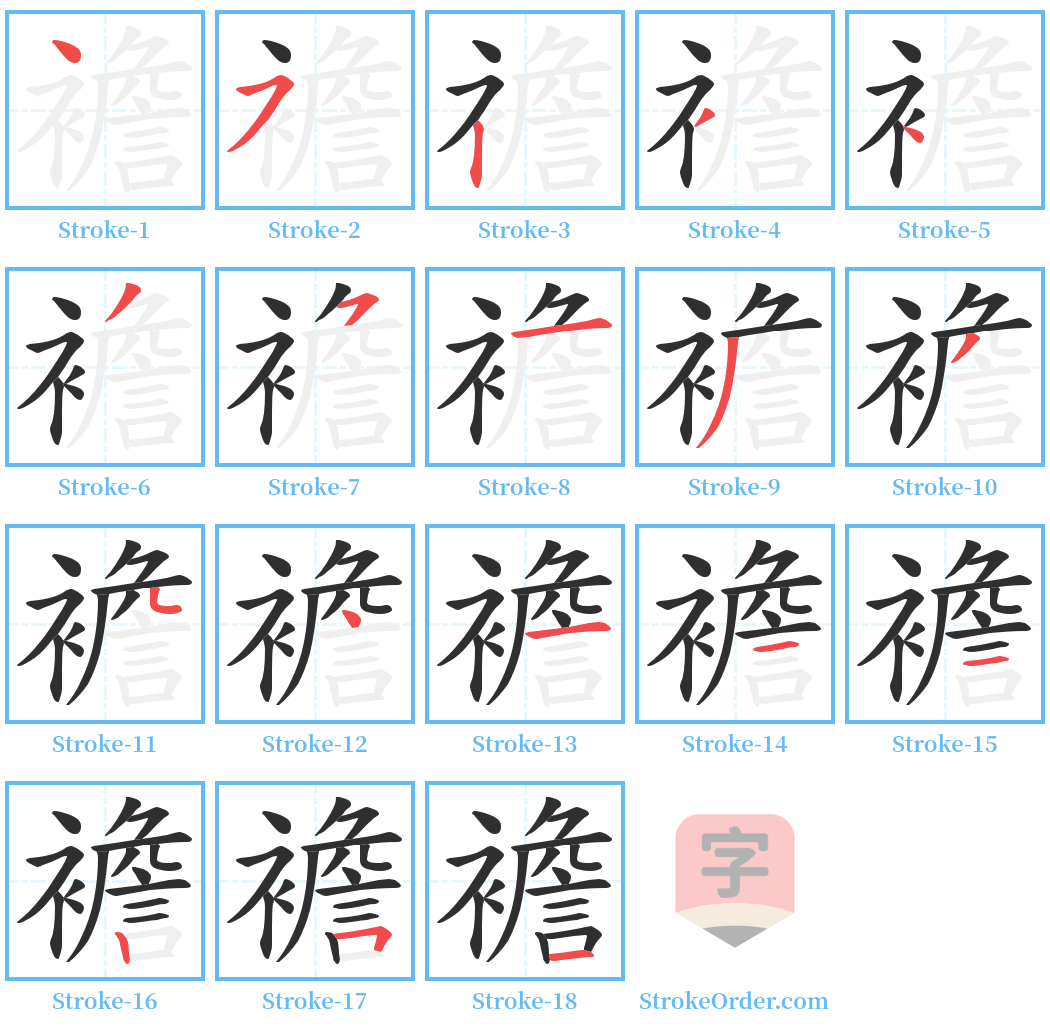襜 Stroke Order
Animated Stroke Order of 襜

Stroke Order Diagrams for 襜

Information of 襜
Pinyin
chān
Radical
衤
Strokes
18 strokes
Usage
★★
Definition
襜 [chān]
1. A short garment worn in ancient times.
2. An apron that is tied in front of the body, known as 蔽膝 (English: apron).
3. Carriage curtains, the cloth drapes around a horse-drawn carriage in ancient times (English: carriage curtains).
引 (References):
1. 襜, refers to clothing that covers the front. From "衣" (clothing), associated with the sound "詹".
2. In "Shijing·Xiaoya·Cai Lu", it says: "不盈一襜", meaning to not fill even one apron.
Examples:
- 襜衣 (short garment that covers to the knees, i.e., apron)
- 襜裙 (a type of skirt worn by women during the Liao and Jin dynasties).
4. In ancient texts, it also refers to the drapes around a carriage, often used in phrases referring to the vehicle itself.
引 (References):
1. From "Xinxu·Miscellaneous matters five": "不出襜幄,而知天下者,以有贤左右也".
2. From "Book of the Later Han, Biography of Cai Mao": "敕行部去襜帷,使百姓见其容服", meaning the order was given to remove the curtains so that the people could see the attire.
Examples:
- 襜车 (a vehicle with curtains as a barrier).
- 襜帷 (the term for carriage curtains, can also refer to the carriage itself).
5. Describes clothing that is neat and elegantly flowing (English: neat).
Examples: 襜如 (clothing is neat and elegantly flowing).